The German designer and graphic artist Otl Aicher once opined, "Hans Gugelot wasn't a theoretician. But not a practitioner either. What is one if neither a theorist nor a practitioner?"1
What, indeed.....?
With the exhibition Hans Gugelot. The Architecture of Design the HfG-Archiv Ulm allows one to approach an answer.....

Johan (Hans) Gugelot was born in Makassar, Indonesia, on April 1st 1920, as the second son to Dutch couple Pieter and Anna Margareta Gugelot, and where he spent his formative years, before the family returned to Holland in the mid-1920s. In 1934 Pieter Gugelot was appointed a Senior Physician at the Dutch Sanatorium in Davos, Switzerland, a timeous appointment and relocation as it meant not only the Gugelot's escaped the worst of the horrors and previsions of both the War and the Nazi occupation of Holland, but also allowed Hans Gugelot to complete his education: having successfully finished his secondary education in 1940 he initially studied at the École d'ingénieurs at the University of Lausanne, before, more on account of his insufficient command of French rather than any lack of interest in engineering, switching to the Eidgenössische Technische Hochschule Zürich where he studied architecture, graduating in 1945.
With his Diploma in his pocket, and the war over, Hans Gugelot spent much of the subsequent two and bit years travelling, predominately in Italy, and both working in a series of architecture offices and playing guitar in a series of jazz bands, music, for all jazz, being a great passion of Gugelot's; and a passion which, more or less, led him to a job with the architect and designer Max Bill. Or as Bill later recalled, he was looking for a new employee, specifically an architect "who thinks a bit unconventionally and is also interested in other things, not just in architecture"2; someone suggested a personable young Dutch architect who, because he couldn't find architecture work that interested and inspired him, was making a living as a jazz guitarist. And planned to continue to do so. Max Bill invited Hans Gugelot for an interview, and Gugelot spent the next two years as a freelancer in Bill's Zürich office, where in addition to developing architecture projects he also developed "other things", most notably furniture designs, before in 1950 he established his own studio in Zürich and began developing projects independent of Bill. Both architecture projects and "other things".
Much as it was Max Bill who had helped bring Hans Gugelot away from jazz and back to architecture and design, or at least professionally on a private level music remained an important focus, so to was it Bill who helped Gugelot with the next step in his career. In 1949 Bill, together with Inge Scholl and Otl Aicher, had been a driving force behind the creation of the Hochschule für Gestaltung, HfG, in Ulm, an institute which took up many of the ideas of the inter-War functionalists, an institute whose teaching staff at its opening in August 1953 included former Bauhäusler such as Josef Albers, Johannes Itten and Helene Nonné-Schmidt, and thus very much an institute which although in no sense a 1:1 copy can be considered the official unofficial Bauhaus successor institute; and an institute to whoms staff Hans Gugelot, at the suggestion of Max Bill, was appointed in 1954 as lecturer in the Construction and Product Form courses and also as head of Furniture Construction, and in which context he took on responsibility for the development of the furniture and interiors of the new school and accommodation buildings. A process which saw Gugelot, along with Max Bill and Paul Hildinger, the then head of the HfG Ulm carpentry workshop, develop in 1954 what would become known as simply the Ulmer Hocker.
1954 also seeing the first meeting between representatives of the HfG Ulm and Erwin Braun who, together with his brother Artur, had in 1951 inherited the family radio/record player manufacturing business, and was looking to modernise both the company's structures and product portfolio. A meeting which marks the start of the HfG Ulm's cooperation with Braun, a cooperation which (largely) defines the popular understanding of the HfG Ulm, and in many regards the popular understanding of Hans Gugelot; and the sort of industrial cooperation both the early 20th century applied arts museums/schools and the inter-War reformist design schools strove for, but rarely achieved.
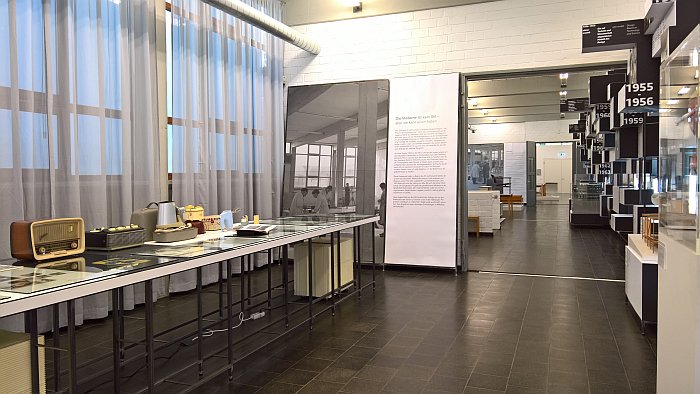
In 1957 Max Bill left the HfG Ulm, Tomás Maldonado became the dominant voice in the institute and was largely responsible for moving it way from its loose Bauhaus associations and reorganising its structures, including separating the teaching from external cooperations; changes which saw Hans Gugelot take charge of the so-called Development Group 2 in which context he and his team, a team composed largely of HfG graduates, developed products for, and in addition to Braun, companies as diverse as Pfaff sewing machines, Sonor percussion, and the Hamburger Hochbahn for whom Gugelot, Herbert Lindinger and Helmut Müller-Kühn, with colour/visual communication input from Otl Aicher and Peter Croy, developed the so-called DT2 train, a model that was introduced in 1962 and over the next three decades was in many regards the defining image of the Hamburg suburban rail network.
In 1961 Hans Gugelot was involved with the establishment of the Design Institute in Ahmedabad, India, a project, largely based on Charles and Ray Eames' 1958 India Report, and a school whose pedagogic concept was closely modelled on those of Bauhaus and the HfG Ulm; in 1962 Gugelot's Development Group 2 was reconfigured as the so-called institut für produktionsentwicklung und design e.v., and moved across the Danube from Ulm to Neu-Ulm, a move necessary on account of the (restricted) spatial realities at the HfG Ulm, but also symbolic of the deteriorating relationships between Gugelot and the HfG Ulm; having moved to Neu-Ulm Gugelot and his institute developed products as varied as, and amongst others, a radial drill for Girards, a lounge chair for Alfred Kill, and a stackable plastic beer crate for Alexander Schoeller & Co, before on September 10th 1965 Hans Gugelot died following a heart attack. Aged just 45.
Yet, and while in no way seeking to distract from the personal tragedies of a life cut so suddenly short, in the twenty years after his graduation Hans Gugelot, as The Architecture of Design helps elucidate, contributed fundamentally to design understandings.
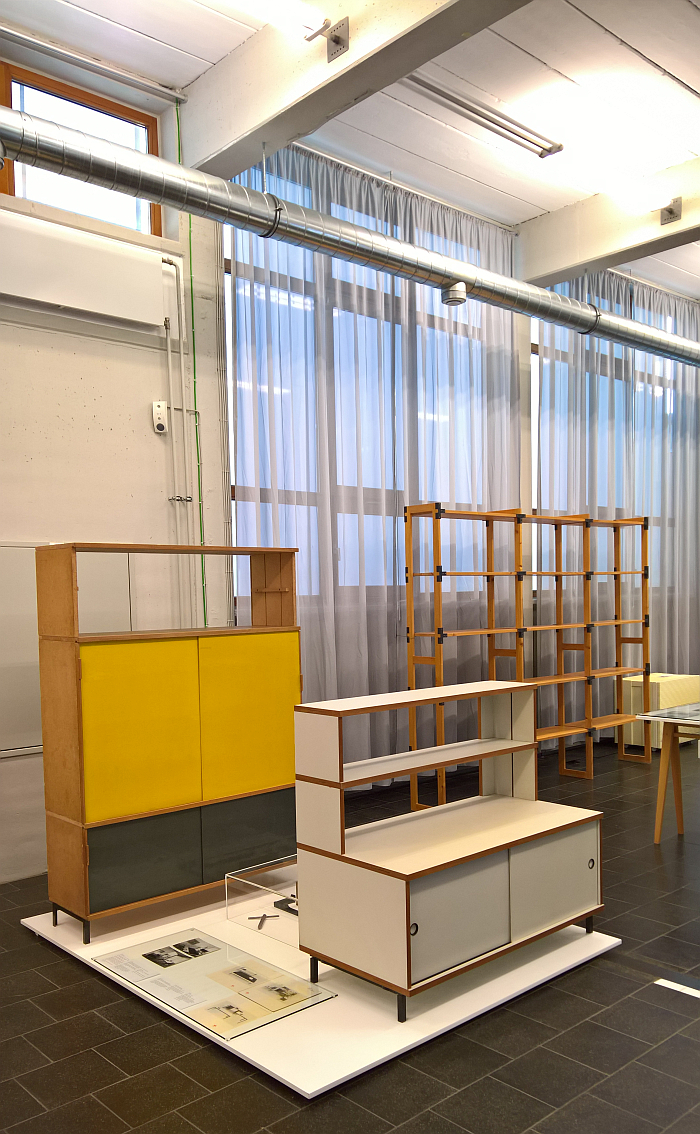
Organised thematically rather than chronologically The Architecture of Design opens by, as it were, setting the scene both in terms of the Hans Gugelot biography, a scene setting including, and most poetically, Hans Gugelot's guitar, and also setting the scene in context of the reality of 1950s consumer electrical good design, that sector which was to become so prominent in the Hans Gugelot oeuvre, certainly the popular Hans Gugelot oeuvre; before moving on to the product design field in which Hans Gugelot's career both began and which, in many regards, informed its subsequent development: furniture.
Hans Gugelot's first furniture designs from the late 1940s included a chair for Horgenglarus which seems (largely) to have vanished, possibly correctly so, but which does seem worthy of further exploration, and the so-called 1363 armchair, a work with a mechanic-free reclining functionality that saw the seat move along and across the arched armrest thereby enabling a broad spectrum of sitting/lounging positions, a work that formally resembles a Postmodern Aalto/Prouvé fusion, which is an observation not a criticism. And a project that was taken on in 1948 by Wohnbedarf, a company established in Zürich in 1931 in close association with the Swiss Werkbund and as a platform for the distribution and dissemination of contemporary furniture and interior understandings, the initial portfolio including works from from likes of, and amongst others, Alvar Aalto, Werner Max Moser and Marcel Breuer, the latter being co-responsible for the interiors of the Wohnbedarf stores in Zürich and Basel. While a certain Max Bill was responsible for not only the first Wohnbedarf posters and sales material but also the company logo.
And, and arguably more importantly than producing the 1363, it was Wohnbedarf who encouraged and supported Hans Gugelot with the development of one of the key works in his oeuvre, and in the (hi)story of furniture design: the M 125.
Having experimented in the late 1940s with standardised, variable, construction systems Hans Gugelot moved to standardised, variable, furniture systems, and thus considerations, both in terms of architecture and furniture, that can be understood very much as developments of ideas originating in the first decades of the 20th century; and considerations which led Hans Gugelot to a furniture system, or perhaps more accurately put, a construction system, from which innumerable storage and shelving objects could be freely realised, a construction system that was as much about the connection principle on which it was based, as it was about the variations of forms that could be realised, and which, arguably, stands as the first freely variable/definable modular furniture system.
Whereas others before Gugelot had developed pre-fabricated modules that could be grouped together, with the M 125 Hans Gugelot offered the basic components - wooden panels, metal brackets, metal rods - and invited the user to design, and construct, that which they needed, and redesign, reconstruct, as their needs and requirements changed; and that a decade before Rudolf Horn's MDW system for the Deutsche Werkstätten Hellerau or Fritz Haller's Möbelsystem USM Haller. And an eternity before Billy was born in Älmhult, Sweden.
Originally launched by Wohnbedarf in 1953, upon his arrival in Ulm Hans Gugelot, together with his students, developed the system further, most notably Helmut Müller-Kühn who, as The Architecture of Design notes, both integrated the metal rods that form the core of the system into the side walls and also developed the "key" that facilitates construction and deconstruction; in 1956 production of the evolved system was taken on by Stuttgart based manufacturer Bofinger; and in 1957 the M 125 was, effectively, relaunched when in its updated form it was employed in the apartments designed by Walter Gropius and Pierre Vago for the Interbau international building exhibition in West Berlin. And a system which continued to be produced, largely unchanged, if by an ever changing succession of manufacturers, until the late 1980s. Yet a system which for all its claims to immortality, wasn't a soaraway commercial success; arguably furniture you configure yourself and which is delivered flat-packed for you to assemble yourself, was simply too new a concept for a great many in the 1950s, and by the time consumers did begin to understand and accept such concepts, they had a choice of systems. Many of which were more practical than the M 125's somewhat involved, time consuming, if logical and intuitive, construction/reconstruction system.
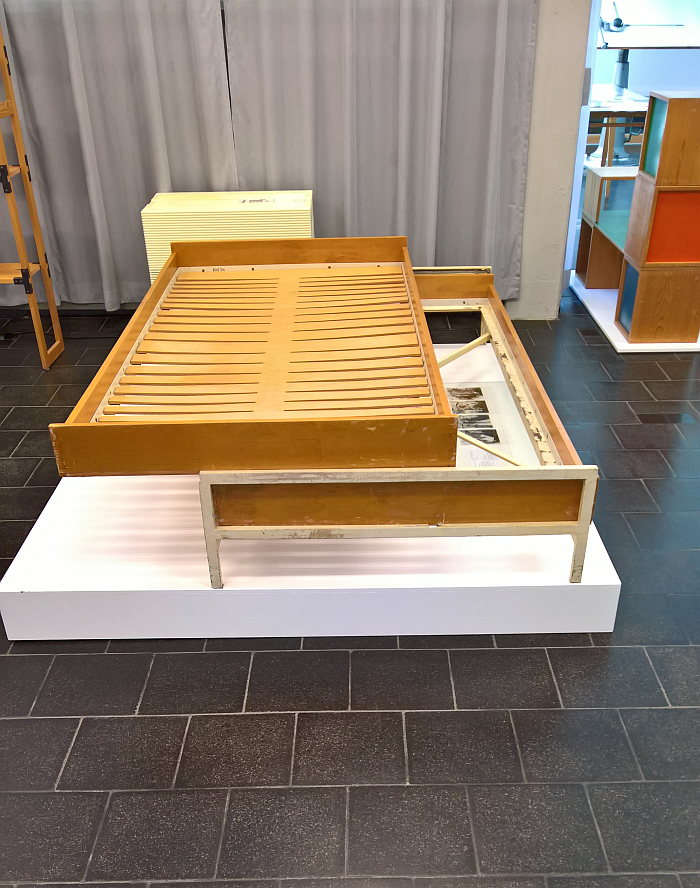
In addition to standing at the beginnings of modular furniture systems, the M 125 also stands at the beginning of Hans Gugelot's considerations and experimentations on construction systems in furniture design, on furniture as a construction system rather than furniture as an object, an understanding whose origins, can, for us, be best understood in context of Hans Gugelot's opinion that the cupboard/cabinet "is not a piece of furniture at all, but rather, on account of its architectonic character, is a building component", and that because the role and function of a cupboard/cabinet is defined by the individual user, and thereby always individual, "it is illogical if two consumers with different needs want to have the same cabinet".3 Or as Rudolf Horn phrased it, one should place "the user as finalist"45
A position which can be explored and understood in The Architecture of Design not just through the M 125 but also an unnamed 1955 shelving system based around a steel connector via which vertical and horizontal supports and shelves can be attached to create a individually definable system, the forerunner of a myriad contemporary student/graduation projects; and a system that wasn't taken up in the 1950s, again, arguably, because it was simply too far ahead. But a system which as it stands there in The Architecture of Design is crying out for a revival in our contemporary age of Open Design and 3D printing. Would Hans Gugelot mind it being freely available for self production? We hope not. Because it should be.
And a position which can also be explored and understood via a children's furniture system released in 1954 by Eystrup, Niedersachsen, based manufacturer Albin Grünzig, a system based around cubes, half cubes and horizontals featuring Bauhaus-esque yellow, blue and red splashes, and which can be freely arranged and rearranged to create that which is needed, or as the sales catalogue notes, is a system which enables, "the young as well as the older child [to] build their own table, their stool, their doll's house, a shelf, a shop, a puppet theatre, all the furniture for their environment at the appropriate height and to the scale appropriate for their age", and thus a system which not only could grow and develop with the child(ren), but whose free variability, and as with works such as the M 125, very neatly demonstrates a sustainability through longevity inherent in a well thought through modular system.
And also neatly demonstrates the well thought through modular, systems, thinking of Hans Gugelot, something also reflected in those radios, record players, tape recorders et al for Braun with which the HfG Ulm, and Hans Gugelot, is popularly most associated.
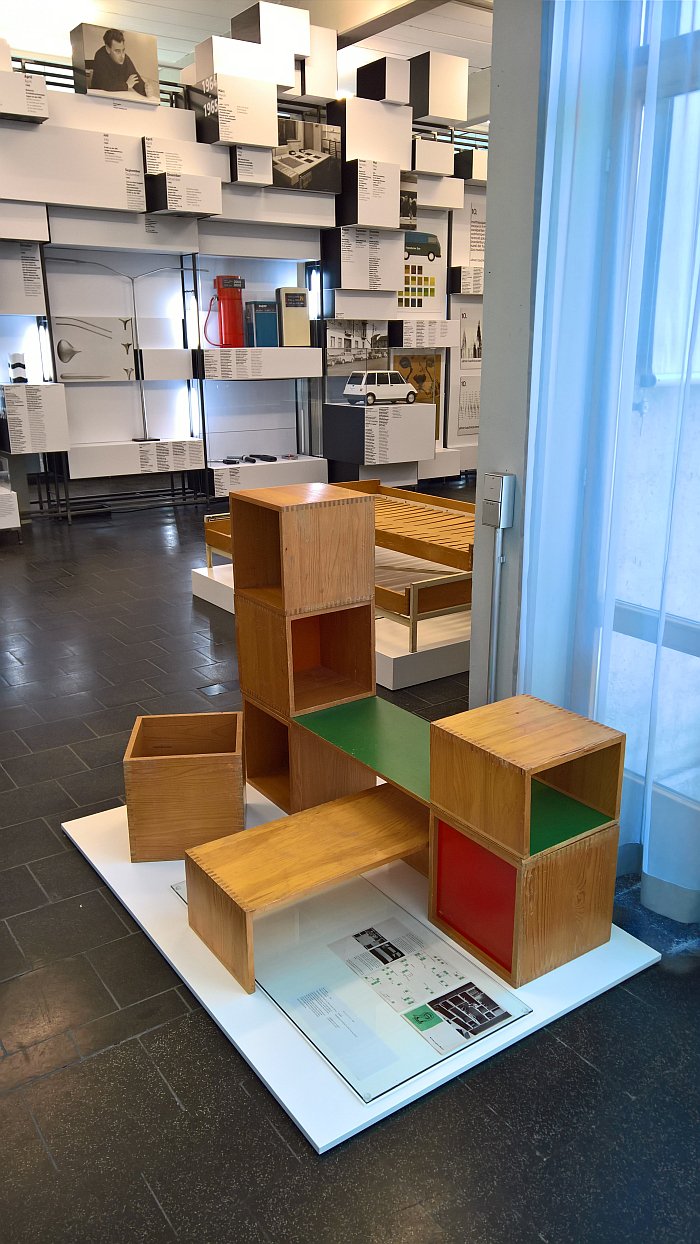
Although Hans Gugelot's most popularly known creation for Braun is without question the SK4 radio/record player realised in cooperation with Dieter Rams, as The Architecture of Design helps elucidate, the SK4 can, must?, be considered but a stage in the development of Hans Gugelot's understandings of the design of audio-visual technology.
A story which begins with Erwin Braun's first visit to Ulm in December in 1954 and which achieved its first public presentation at the 1955 Große Deutsche Rundfunk-, Fernseh- und Phono trade fair in Düsseldorf where the HfG Ulm were (a) under the direction of Otl Aicher responsible for the Braun promotional material and the fair stand, a stand which went new ways formally and that with much public furore,6 and which was furnished, in addition to with Gugelot's 1363 for Wohnbedarf, predominately with Knoll, including Harry Bertoia's 1952 Diamond chair, and thus tending to indicate the strength of design impulses coming out of America in the mid-1950s7; and (b) under the direction of Hans Gugelot responsible for a new Braun product range, including the G-11 Super radio, G-12 record player and FS-G television, objects which although reliant on existing Braun technology,8 Gugelot and his students placed inside very new, reduced wooden cases, specifically maple, and thereby a much lighter wood than those traditionally employed in the 1950s, and cases not only devoid of any ornamentation or embellishment, but designed along standardised, formally unified, lines and which thus could be freely employed alongside and/or on top one another. Or as Fritz Eichler, the man responsible from 1954 for the development of the Braun design department, describes the 1955 works, "light and precise-looking devices which although individuals, formed a family".9 And thus, in many regards the first modular stereo/home entertainment system. As with modular furniture, as represented by the M 125, one of those stupidly obvious concepts that was utterly unimaginable, inconceivable, before it became stupidly obvious.
And having achieved the stupidly obvious, Gugelot and his students began to consider in more detail both the technology and the visual expression. And for all to move away from what Gugelot, by all accounts, disparagingly referred to as Tonmöbel, stereo/home entertainment equipment that was placed in/disguised as objects of furniture, and instead to create objects that could stand in a room self-confidently as that which they were. Of which the SK4 is the first, an object whose combination of metal with wood bequeaths it both an independence and contemporaneousness, something underscored by the reduced, linear radio dial, while the care taken in designing both the front and the back means it can be placed freely in a room and enjoyed from all angles.
And a concept that Gugelot and Herbert Lindinger developed further with the catchily titled, Radio-Phono-Audiotape Modular System; a, as the name implies, modular radio, phonograph, audiotape system and which took the compaction of the objects, their formal reduction and their modularity to new extremes, including making them wall mountable; a project that although officially Lindinger's Diploma project, must be understood as joint, or as Lindinger noted, "Delimiting my personal share in this work is almost impossible"10 a project that although completed in 1959 Braun didn't launch until 1962, and then as the so-called studio 2, a modification of Gugelot/Lindiger's project by the Braun in-house design team under Dieter Rams. Whereby the official recognition of Gugelot/Lindiger's project is often lacking in talk of studio 2. But that's another story....
And a project, or more accurately put association with audio-visual technology which, as with The Architecture of Design as a whole, allows one to understand not only the systems thinking that underscored much of Hans Gugelot's design understandings, but Hans Gugelot's contribution to normalising systems thinking in product and industrial design.
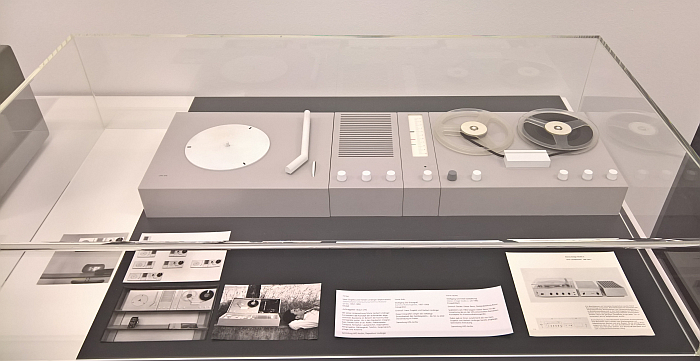
Beyond exploring the systems thinking that is so central to Hans Gugelot, central to understanding Hans Gugelot, The Architecture of Design also allows for reflections and consideration on Hans Gugelot's career as an educator, a career which began at the HfG Ulm and continued up to his death, in 1965 he had served as guest lecturer in Ahmedabad, and a career as an educator which is just as important a component of his biography as his design work. If one he, arguably, never mastered to the same degree, the exhibition catalogue noting several comments by ex-students of Gugelot's (wanting) pedagogic talents, talents most tangibly summarised for us by Helmut Müller-Kühn's "That wasn't teaching ... If I hadn't liked Gugelot so much, I would have left".11 And fortunately he did like Gugelot so much; Helmut Müller-Kühn being one of Hans Gugelot's most important collaborators, certainly during the late 1950s. And, equally fortunately, many others also stayed and through their cooperations with Hans Gugelot helped contributed to both design (hi)story and Hans Gugelot's oeuvre.
An oeuvre represented in The Architecture of Design by a wide range of projects including, and amongst many others, Gugelot's 1961 Sixtant 1 razor, one of the defining Braun products; the GS 1076 chair for Bofinger, a work which, not only features a very nicely reduced, rationalised, construction, and thus production, system, but a swivelling backrest which, for us, very neatly quotes Erich Dieckmann and also points towards Verner Panton's 270 F for Thonet; and a bed which not only demonstrates that Hans Gugelot's contribution to the furnishings of the HfG Ulm was more than a stool, but also his seldom publicly acknowledged contribution to the development of the slatted bed base. Or indeed that the slatted bed base was something that was developed, designed.....
And an oeuvre also represented by projects which remained unrealised, which never got beyond the drawing board or the prototype, and including, and amongst others, the so-called K4 kitchen machine developed by Gugelot in 1959 for, but not taken on by, Braun. Based around a compact motorised body which powered a range of attachments, thereby allowing one body to perform a variety of functions and therefore negating the need to buy individual appliances, the K4 is a further excellent example of a concept developed by Hans Gugelot which remains not only a popular subject for contemporary design students, but an effortlessly obvious concept. Whereby our only problem with the K4 is the 4 functionalities it could perform: dough/pastry stirring, potato peeling, shoe polishing, drilling/grinding.
?
Or perhaps better put
???
We're sure there is a logic in the mix, but......
And an oeuvre, and biography, which not only allows one to approach a better understanding of Hans Gugelot's contribution to the development of design, of Hans Gugelot's contribution to the development of industrial design, and of his continuing relevance, but an oeuvre, and biography, which poses the very obvious question, what if Hans Gugelot hadn't died so young?
A question posed not only by his oeuvre and biography but by his positions to and his understandings of design, and by the timing of his death, just before '68, the year of not only a cultural revolution, but the closure of the HfG Ulm. Where would a designer such as Hans Gugelot have found himself post '68? Where would design in Germany find itself today? Where would industrial design find itself today......
.....and questions for another day.
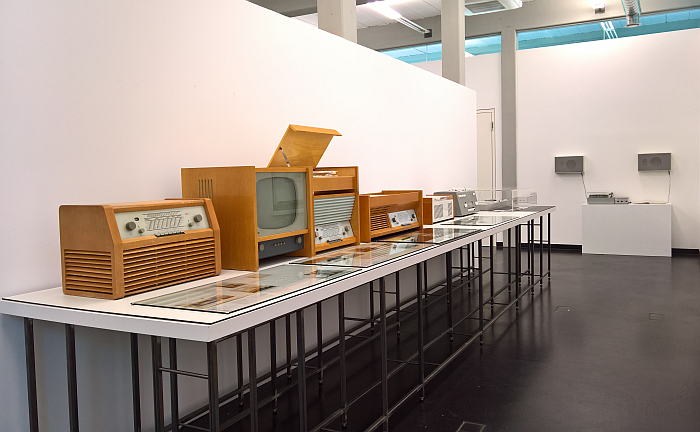
A bijou, if varied and detailed, showcase The Architecture of Design is unfortunately only in German, unfortunate because Hans Gugelot's relevance is much wider.
However for Germanophones, and non-Germanophones with a little patience and a good online translator, The Architecture of Design provides for an easily comprehensible and logically structured introduction to the life and work of Hans Gugelot, an introduction largely explained through objects, but also through innumerable documents, texts, photos, et al, and an introduction which very succinctly explores and reflects on that which Hans Gugelot achieved, how he achieved it, why he sought to achieve it, how in his achieving it he developed design as a practice and a profession, how he contributed to developments in understandings of formal expression, of the form-function relationship, of usability, of the value of an object as more than economic, and thereby an introduction that allows one to approach in a more informed, considered and reflective manner, the question "what is one if neither a theorist nor a practitioner?"
And indeed why one need be either, is it not more important to be someone "who thinks a bit unconventionally"?
Be that in architecture, design, music, or "other things"...........?
Hans Gugelot. The Architecture of Design runs at the HfG-Archiv Ulm, Am Hochsträß 8, 89081 Ulm until Sunday September 30th
Full details can be found at https://hfg-archiv.museumulm.de/hans-gugelot
And as ever in these times, if you are planning visiting please familiarise yourself in advance with the current ticketing, entry, safety, hygiene, cloakroom, etc rules and systems. And during your visit please stay safe, stay responsible, and above all, stay curious….
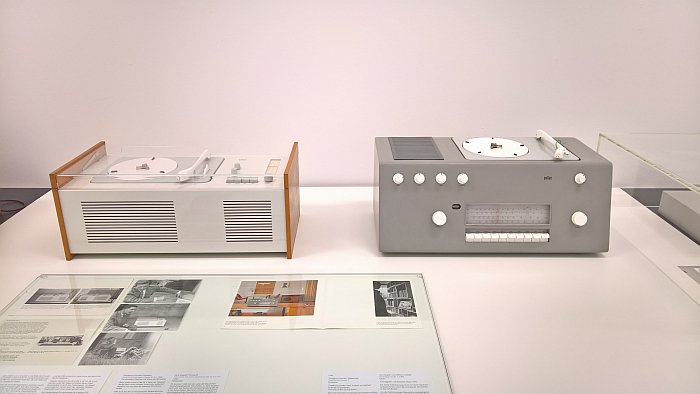
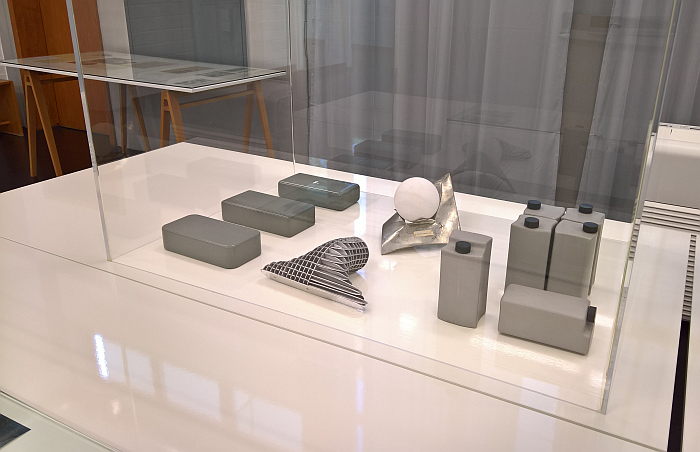
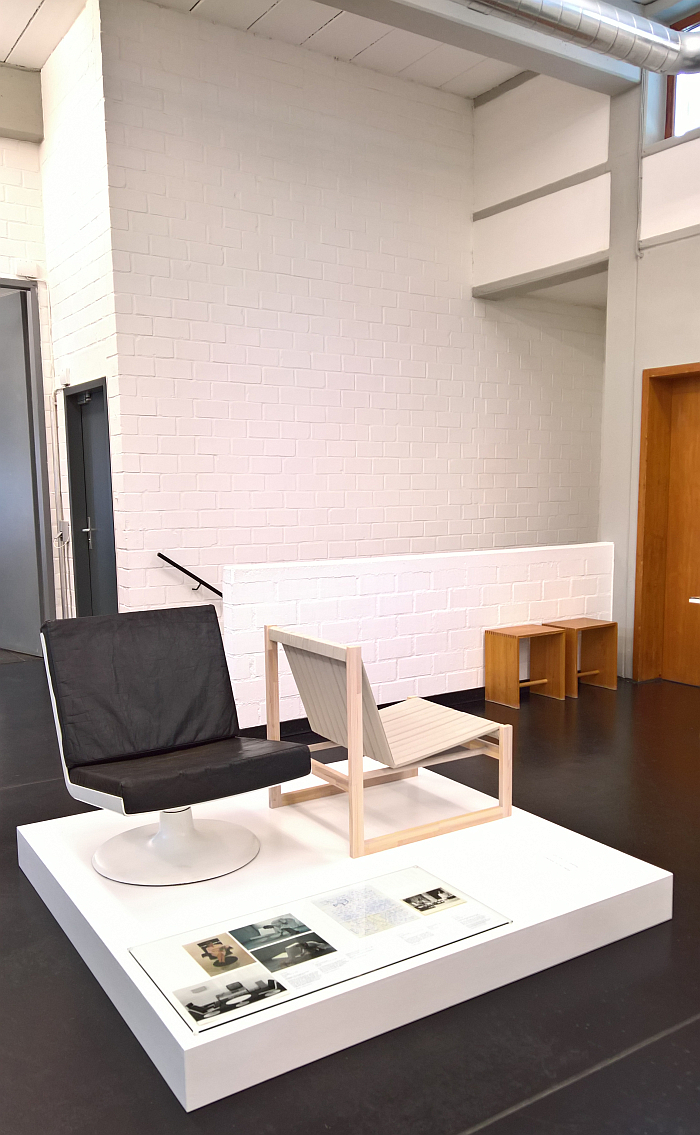
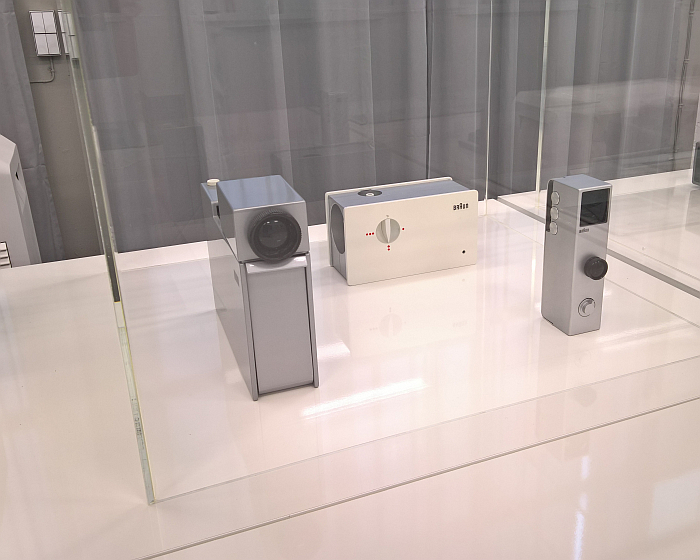
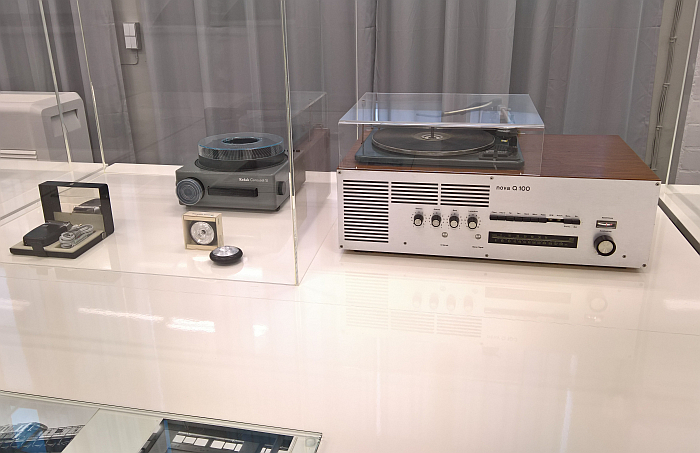
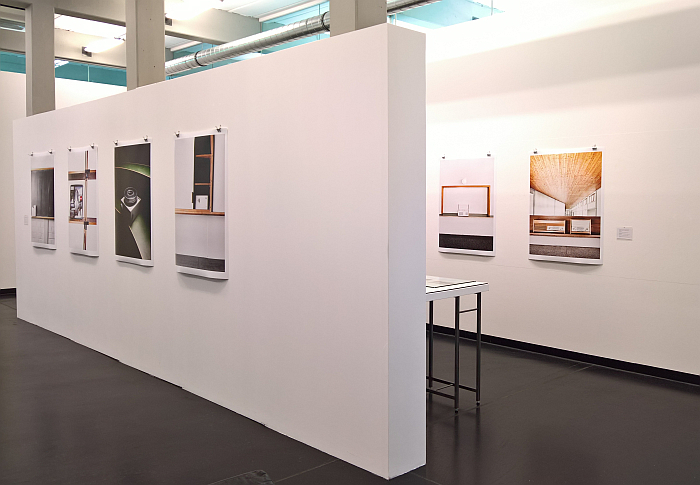
1Otl Aicher, Hans Gugelot in Hans Wichmann, System-Design, Bahnbrecher: Hans Gugelot 1920-1965, Birkhäuser Verlag, Basel, 1987, page 23
2Max Bill, interview with Sigrid von Schweinitz, 17.08.1979, quoted in Christiane Wachsmann, Die Moderne ist kein Stil (aber sie kann ihn haben) Hans Gugelot: Leben und Arbeit, in HfG-Archiv/Museum Ulm & Christiane Wachsmann [Eds.] Hans Gugelot. Die Architektur des Design, aveedition, Stuttgart, 2020, page 21
3Hans Gugelot, Beschreibung und Analyse des Baukastensystems M 125, in Werner Blaser, Element-System-Möbel. Wege von der Architektur zum Design, Deutshe Verlags-Anstalt, Stuttgart, 1984
4Rudolf Horn, Der Nutzer als Finalist, Form+Zweck 13. Jahrgang No.6 1981 Accessible via https://digital.slub-dresden.de/werkansicht/dlf/131342/45/0/ (accessed 10.07.2020)
5Rudolf Horn and his MDW system is only one of many parallels between/reflections on post-War design in East Germany and West Germany raised not only by considerations on Hans Gugelot but of the HfG Ulm in general. However as with Beauty of Form. The Designer Christa Petroff-Bohne at the Kunstgewerbemuseum Dresden here isn't the time nor place, but it will come.....
6The fact that the Braun stand in 1955 caused such a furore neatly exemplifying how quickly Lilly Reich's trade fair stand design work of the 1920s and 30s became forgotten post war, or perhaps better put, how quickly firms returned to long established display formats.
7It is also important to note that Knoll and Braun both belonged to the in 1955 established Verbundkreis für Industrieform a conglomeration of a dozen manufacturers including, and amongst others Rosenthal, WMF and Rasch Tapeten, who cooperated closely in marketing and associated areas.
8As far as we understand the TV technology was from Telefunken......
9Fritz Eichler, Realisation am Beispiel: Braun AG, in Hans Wichmann, System-Design, Bahnbrecher: Hans Gugelot 1920-1965, Birkhäuser Verlag, Basel, 1987
10Herbert Lindinger, Ein Baukastensystem für Apparate der akustischen und visuellen Informationsspeicherung und -übermittlung im Wohnbereich, Diploma Project, HfG Ulm, quoted in Hans Wichmann, System-Design, Bahnbrecher: Hans Gugelot 1920-1965, Birkhäuser Verlag, Basel, 1987, page 94
11Quoted in Eva von Seckendorff, "design ist gar nicht lehrbar...." Hans Gugelots Entwicklung als Lehrer, in HfG-Archiv/Museum Ulm & Christiane Wachsmann [Eds.] Hans Gugelot. Die Architektur des Design, aveedition, Stuttgart, 2020, page 85